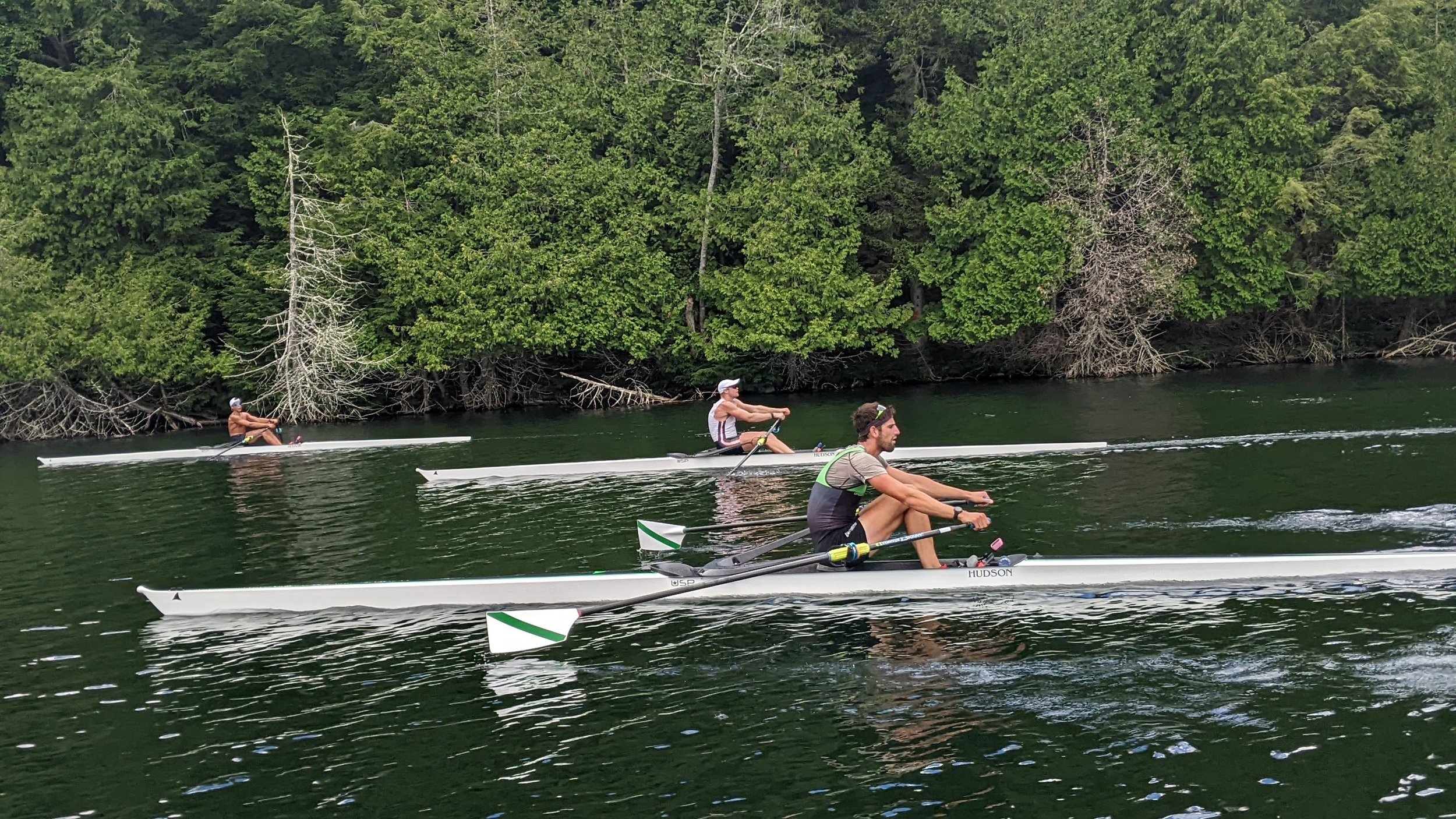Tech Tip: Rebound over Reflex
by GRP Row Coach Steve Whelpley
The front end always gets loads of attention, and for good reason, as a sculler is both changing directions and placing the blades into the water. Like any sport, a change of direction is a skillful task. In ours, we combine it with two other small motor skills (squaring and placing), while also attempting to "pick up" the speed of the boat. How do we both refine this complex movement while also making it an autonomic response?
Mastery works to habituate extremely refined skills. However, I would argue that these learned autonomic responses are still different from reflexes. Many people take the front end like a football player cuts a route or how a car rapidly decelerates. Front ends will be almost reflexive and without the subtle cognition that accounts for the inherited speed of the boat. I would suggest that you need to have a rebound instead of a reflex at the front end.
John Riley of PennAC often coaches his athletes to "bounce" the front end. In my interpretation, he's looking for something athletic, agile, and lively. Something that has a continuous movement that naturally finds the speed of the boat. A bounce or a rebound still isn't an instinctual reflex in my opinion. When we throw a ball at a wall, we do it with an anticipation of how it will move away from the wall once it hits. How do we find this sensation in the boat? A rebound or a bounce is going to happen more from relaxation than tension. The legs coil like a light spring that compresses and releases behind the knees and in the ankles. The initial generation of speed on the drive can be more about not impeding what speed exists than it is about immediately producing something.
A great drill to work on this is doing what I like to call "dance steps." You simply alternate between taking full strokes and short strokes (typically off the back end). For instance, take two full strokes and then one 1/2 or 1/4 slide stroke from the back stops. Repeat this pattern. Long, long, short. Long, long, short. You'll quickly find that the quarter slide stroke is more about not slowing the boat down than it is about speeding the boat up. In the lesson learned during this quick short stroke, you can find the recipe for an effective front end. As you get better at these dance steps, make it more difficult by adding more speed. Take 3-5 full strokes followed by a 1/4 slide stroke. If this becomes conquerable, then really push the envelope by trying to take the shortened stroke off the front end rather than the back end.
Remember, the catch is like a handshake. It is 50% receptively passive as you feel what the boat is doing, and 50% engagingly assertive as you try to merge with your next drive. Don't hand the front end a limp fish, but also don't give it a death grip. Make a good impression, and don't let your front end be a reflex.

